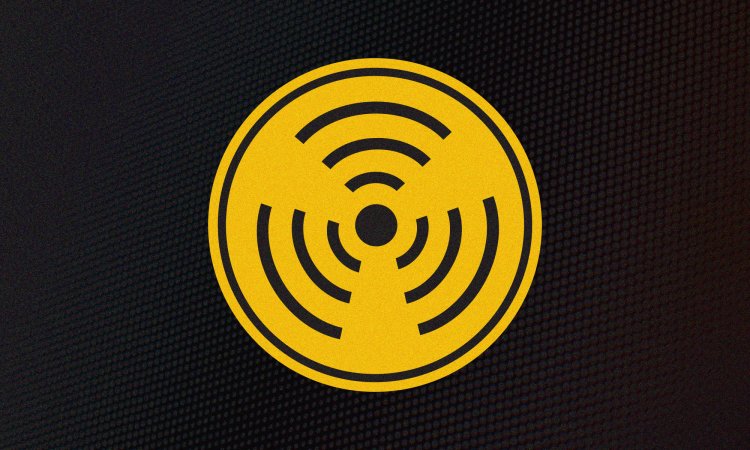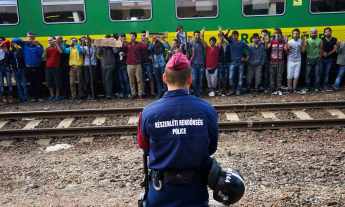
In the Internet era, conflict is constant, invisible and deadlier than ever. No longer is the country with the biggest army or most missiles the most powerful — instead, those wielding the best algorithm can dominate, says foreign policy strategist David Rothkopf.
Today, new technology has ushered in an era of a new kind of conflict. It’s a war that, on its surface, looks like peace; it can be waged constantly and will be invisible to most in society. This kind of conflict might be called a cool war, one that is so inexpensive, because of its invisibility and deniability, that some powers may find they can never stop fighting it.
This echoes another watershed moment in conflict. Back in the 14th century, it might have seemed impossible to imagine an end to the feudal system, knights and the horse. However, by 1477, the rise of the use of pikes and infantry proved devastating, leading to a decisive defeat for knights fighting in the old style at the Battle of Nancy in France. At the same time, newly emergent states were creating professional armies, which were cheaper to maintain and easier to equip with new technologies.
We can already see signs of the modern-day equivalents of the Battle of Nancy, the first skirmishes in cyberwar, in warfare depending on unmanned smart weapons, like drones, and other hints of what may follow. These changes raise the prospect of a new era in which warfare is constant, in which the line between war and peace is forever blurred or obliterated. In this era of cyberwar, nations may seek not to destroy one another but to weaken institutions and to wound or impede enemies without killing them. It will be invisible, but it may also elevate tensions between nations in such a way that the invisibility itself will be dangerously deceptive, raising the prospect of more traditional conflict even as it seems to sidestep it or obviate the need for it.
As we consider the advent of big data and artificial intelligence, it is easy to imagine a world in which the person who wields the best algorithm can defeat the one who fields the biggest army.
In this new era, not only will the Internet be used as the delivery system for cyberattacks, it will be essential to all other aspects of warfare, from intelligence gathering to recruiting fighters to spreading propaganda that might influence the outcome of elections or tilt public opinion to assessing damage. At the same time, it will be the ultimate target, the vital organ that, if shut down, can paralyze or destroy an economy or a political enemy. Thus, the terrain of the network — defined by infrastructure, regulations and concentration of resources and capabilities — becomes as critical as geographic terrain. In politics, security and business, understanding that terrain and the new rules of power that pertain to it will become especially important. So, too, will understanding how elements of the network impacting its speed, ease of use and security influence the conditions for success or failure of those on the network.
Historically, power was achieved by ruling the waves, as Britain once did, or, as more modern conflicts have required, through air superiority. In this new era, those with the greatest understanding of networks and cyberwarfare, the greatest resources to command this new terrain, will have the power. At the same time, those who are most dependent on the network — likely also to be the most developed countries — will become more vulnerable due to this very dependency. We might call this the “network paradox,” a phenomenon by which joining a network can both strengthen and create new vulnerabilities. A corollary to it, however, might be called the “network power paradox,” in which the network empowers all those on it and enables a constant shifting of that power, creating more independence and capability than ever before — both for those at the fringes of the network (at the bottom in the traditional power distribution) and for those at the center or top. In such a connected world, the flow of influence courses in every direction. The opportunities, along with the security threats, abound for us all. The very nature of power and the very nature of conflict itself are more broadly distributed and dangerous.
Whoever is best able to monetize data, make connections, capture intelligence or create new forms of value can gain strength.
A compelling example of just how subtle this new technological warfare is can be seen in the United States’ efforts to challenge oppressive and extremist narratives. In 2009, at the height of Iran’s Green Revolution, Jared Cohen, a member of former Secretary Condoleezza Rice’s policy-planning staff at the State Department, advocated for an aggressive social media campaign supporting the message of pro-reform groups and counteracting the repressive regime in Tehran. He helped devise a plan to assist protesters in Iran to remain connected to the international media. Reaching out to connections at Twitter, Cohen asked them to delay a scheduled site upgrade to keep the protesters plugged in. Twitter complied. He almost lost his job for breaking with protocol, but Secretary Clinton jumped to his defense.
Given the shifting equation of power, this example illustrates that big companies, too, can gain power in ways that give them extraordinary influence. Consider the companies with billions of users or those that control information or key technological monopolies or near monopolies — and have greater resources and global reach than many countries. Who can influence more people: a major power like the United Kingdom, or a company like Facebook? The power that used to rule the waves, or the one that dominates the airwaves and the mindshare?
With an economy in which the building blocks of economic value are bits and bytes rather than acres of land or vaults full of gold, whoever is best able to monetize data, make connections, capture intelligence or create new forms of value can win and gain resources and strength. Indeed, the winners are more likely to be those who can gain the virtual high ground in multiple ways. (In 2016, the media company I run honored Eric Schmidt, the executive chair of Google, by naming the company “Diplomat of the Year” — because we came to the conclusion that tech companies were doing much more to impact international relations than most, if not all, traditional national states.) We have also seen how relatively small groups, including terrorist networks or private hackers, can wield power that once only countries had. They can disrupt or shut down economies, muster armies, steal vast sums, or wage massive and effective propaganda wars. As we consider the advent of big data and artificial intelligence, it is easy to imagine a world in which the person who wields the best algorithm can defeat the one who fields the biggest army.
The new reality is that threats will come at all of us faster than before, from all precincts of the network. Naturally, forces with greater resources will have greater power to dominate, and those on the fringes will primarily have the power to disrupt. The Net enables power to swiftly transfer from node to node or ad hoc alliances to emerge quickly as actors seek strength through collaboration.
The potential for devastating conflict between major powers is greater than it has ever been.
We are in the midst of the Cool War, a war which has been as active and constant as any of the other, more public areas of digital disruption about which we make movies and out of whose protagonists we create heroes. It is just more shadowy. Cool War heroes look like the members of the Chinese People’s Liberation Army unit 61398, the Shanghai-based operation revealed to be behind many cyberattacks on US companies and government agencies. One attack evolved into a major intrusion into the US Office of Personnel Management, which stole data on more than 23 million government employees. Via these attacks, the Chinese gain access to valuable insights into how the government works — or into the intellectual property of US companies that helps their own companies become more competitive. This puts them in a better position to conduct more damaging attacks, akin to the Stuxnet intrusion, should they someday wish to.
While it all may seem more benign than the era in which my generation and those before it grew up, the era in which global thermonuclear war was a threat all the time, it is not. Because being engaged in constant conflict raises the possibility of escalation and errors, and those nuclear weapons have not gone away. The potential for devastating conflict between major powers is greater than it has ever been.
In this high-stakes area, our best defense against the worst possible outcomes is asking the right questions before it’s too late. These questions must be posed by our governments and militaries, updating the law and international norms to provide safeguards against new forms of total war. They must be asked by our journalists, reporters and experts, probing into the realities of digital and high-tech warfare for the facts and dynamics worthy of greater public conversation — and fighting and resisting the efforts of some to use information warfare to carry the fog of war into daily life through the spread of disinformation and the devaluation of truth. Finally, we in the public at large must recognize and take advantage of the fact that the same tools that make this new warfare possible and empower non-state actors like terror groups can also empower each of us and all of us to raise questions, spread our views and create political movements to pressure leaders into thinking about what kind of future we collectively seek and what kind of peace we want our children and grandchildren to enjoy before embracing all the new and complex tools for the wars of the future.
Excerpted from the new book The Great Questions of Tomorrow by David Rothkopf. Reprinted with permission from TED Books/Simon & Schuster. © 2017 David Rothkopf.











